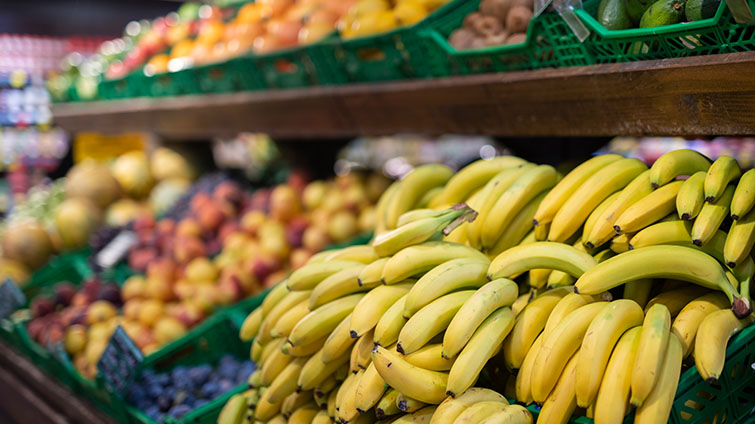Expect higher trucking rates and tight air capacity for retail deliveries
Published: Thursday, November 06, 2025 | 08:00 AM CDT
Holiday deliveries face higher rates for trucking, ocean and air
Through the holiday season, retailers and retail suppliers should expect U.S. trucking rates to steadily climb. The latest C.H. Robinson truckload forecast shows rates peaking roughly where they peaked at the end of 2024. The supply of carriers in the market remains plentiful, with a spate of new regulatory and enforcement actions on drivers not having an immediate impact on capacity.
For less-than-truckload deliveries, some carriers have already announced general rate increases (GRIs) that will affect shippers who don’t have contractual rates and rely on the spot market. For more, go to our Truckload Delivery and LTL Delivery reports.
For retailers and retail suppliers needing to bring in replenishment inventory to get through the holidays, ocean carriers have gradually reinstated Trans-Pacific capacity from Asia to the United States and Canada. Still, careful planning of lead times remains essential because carriers are controlling sailing schedules to support higher rates. A mid-October rate increase was followed by an additional hike on 1 November. Whether those increases will stick is uncertain.
Ocean imports from Europe face congestion at major ports, which limits the volume of cargo that can be handled efficiently and effectively and reduces capacity despite available vessels. Structural challenges—such as port infrastructure, berth availability and labour actions at Antwerp and Rotterdam—are also prolonging turnaround times and slowing transit.
These factors collectively tighten capacity across key European lanes, underscoring the need for shippers to consider planning bookings well in advance and provide accurate forecasts to secure space through the end of the year.
Air freight this holiday season may also require extra lead time for booking. Capacity is tightening across key trade lanes, particularly for time-sensitive cargo. Rates have stayed firm as airlines continue to prioritise high-value and urgent deliveries, including electronics and ecommerce products.
For more, go to our Ocean Delivery and Air Freight reports.
Focus turns to returns, fraud and theft
Retailers are projected to see a staggering $850 billion in returns in 2025. Nearly 20% of online sales are expected to be returned, with one in 10 returns classified as fraudulent.
80% of shoppers say they read return policies before making online purchases and 71% say they’re less likely to shop with a retailer after a poor experience. At the same time, more than 40% of shoppers feel it is acceptable to “bend the rules” when they return items.
In addition to online return fraud, in-store theft is predicted to grow to over $53 billion by 2027. Retailers catch only 2% of shoplifters and only one out of every 100 shoplifting incidents leads to an arrest.
Retailers should evaluate their reverse logistics strategy now and can potentially offset the growing cost of fraud and shoplifting by pursuing hidden saving opportunities in their supply chain. Retail shippers often focus on optimising either their bulk deliveries or direct-to-consumer parcels, which hampers their ability to find synergies across the full supply chain. Managed Solutions offers the ability to run scenarios across all delivery modes globally.
Tariff updates
- Reciprocal tariffs: On 5 November, the U.S. Supreme Court heard oral arguments in the case that will determine whether the president has the authority to impose tariffs by declaring a national emergency. Reciprocal tariffs on imports from most countries were established under the International Emergency Economic Powers Act (IEEPA), as were tariffs imposed on goods from China, Mexico and Canada with the goal of reducing the flow of fentanyl. If the Supreme Court determines the president hasn't got this authority, it’s uncertain whether refunds will follow. A ruling is expected by early to mid-December.
- China: An interim U.S. deal with China announced in writing 1 November provided some relief for retail importers. It included a decrease in the drug-related tariff from 20% to 10%, set the reciprocal tariff at 10% for a full year instead of it rising to 34% on 10 November and averted the threat of an additional 100% tariff. These measures are scheduled to go into effect 10 November. See the White House fact sheet for more details.
- Canada: On 25 Oct., the U.S. administration said it would add 10% to tariffs on goods from Canada. It’s not clear when this measure will take effect and which goods will be affected. Most Canadian exports to the United States are exempt from tariffs under the United States-Mexico-Canada Agreement (USMCA). Goods not covered by USMCA have been subject to a 35% tariff since August 2025.
- Furniture and lumber: New tariffs of 25% on upholstered furniture, kitchen cabinets and bathroom vanities and 10% on softwood timber and lumber were implemented in mid-October.
- New Asia deals: The United States reached tariff deals with Malaysia, Thailand and Vietnam. Each country agreed to eliminate tariffs on U.S. goods, with some exceptions. Imports to the United States from Malaysia and Thailand will face a 19% tariff and those from Vietnam 20%. In each case, exceptions apply.
 Download slides
Download slides